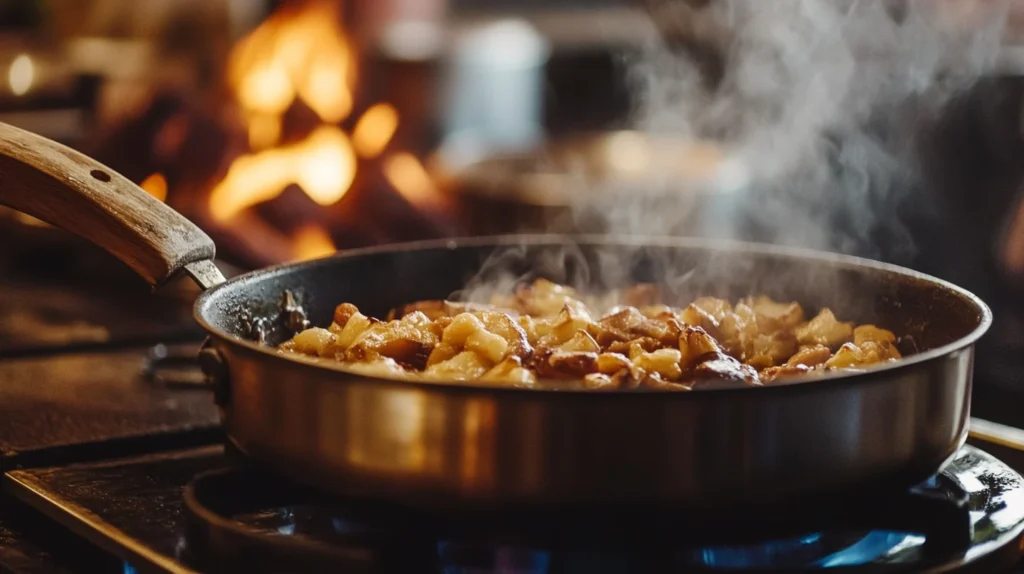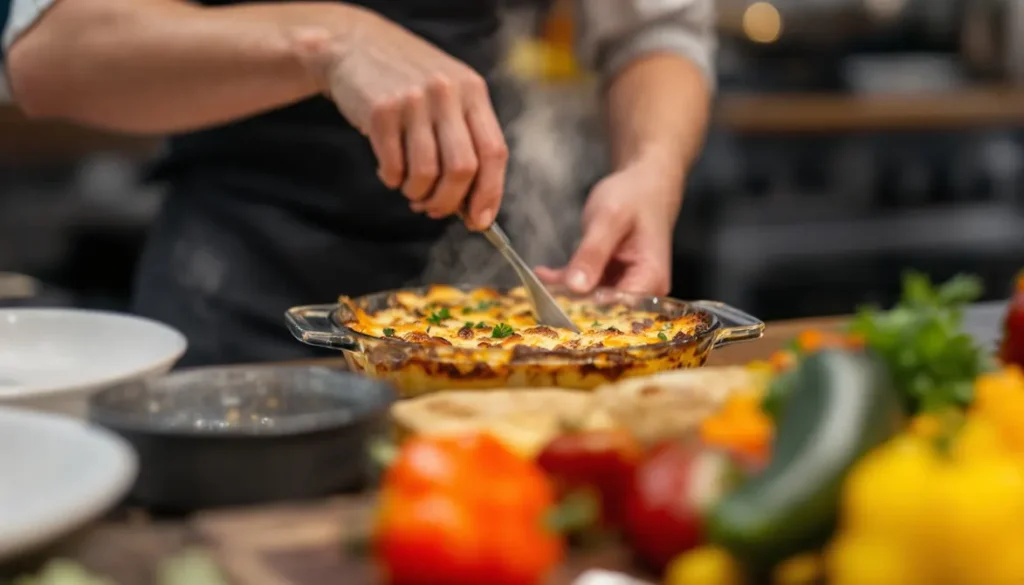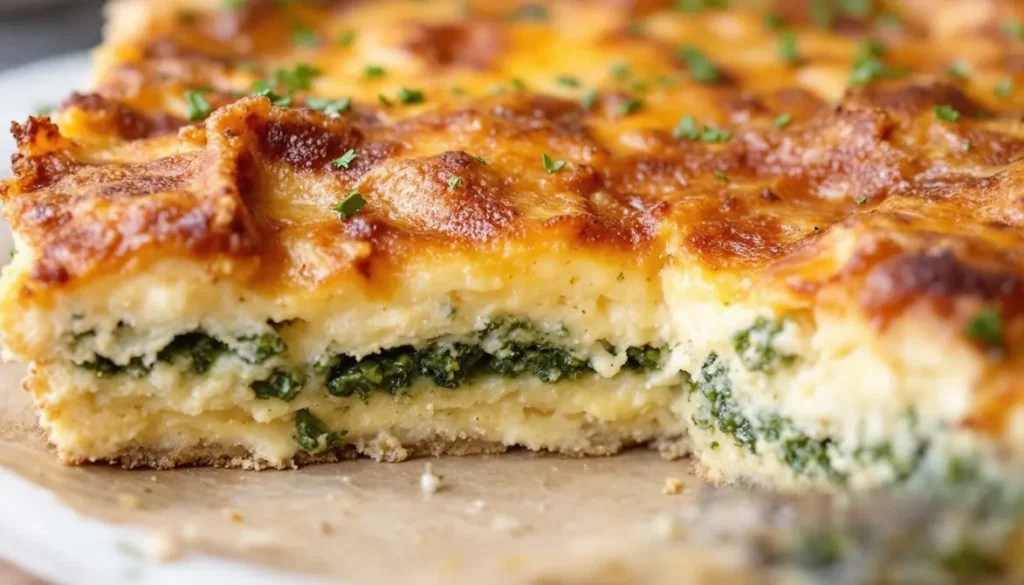What are the 5 Components of a Casserole?
Casseroles are the classic comfort food. They combine basic ingredients to make an easy, delicious meal. But what is it that makes the casserole special? It’s all down to five essential elements. Each adds a unique flavor in the food. Together, they form the perfect balance of flavor and textures. In this article we’ll go over the five elements and demonstrate how to make them work. When you’re preparing the family’s favorite dish or trying an entirely new recipe, these suggestions will assist you in making an amazing casserole each time.
Introduction to Casserole Components
What is a Casserole?
The casserole can be described as a basic baked dish that is made of layers of ingredients. It’s ideal for busy cooks since it is a combination of everything in one pan. These meals are easy to prepare, filling and adaptable. You can make them with different ingredients to satisfy your tastes or use what’s already in your fridge.
Why Are the 5 Components Important?
A good casserole is comprised of five essential components. This includes the protein base, starch vegetables, sauce and the topping. Each of them serves a role. The base provides structure, while the protein is what makes it hearty and the vegetables provide the balance. The sauce keeps it all together, while the topping gives it that final zing. Together, they form an enticing dish that’s complete.
Overview of the 5 Components
Every dish has these five ingredients The possibilities are infinite. Mix and match ingredients to fit your preferences or experiment with different flavors. In this post, we’ll discuss how you can use these ingredients to create casseroles that are delicious every time. Let’s get started!

Base or Starch
What is the Base of a Casserole?
Its foundation is the basis of every great casserole. This gives the food structure and is hearty enough to be a complete meal. Common bases include pasta, rice, potatoes, or even grains like quinoa. These ingredients create blank slates, and soak in the flavor of the sauce as well as other ingredients.
Popular Choices for the Base
When you’re choosing a base for your dish take into consideration the texture you’d like. Pasta provides a soft and cozy layer, whereas potatoes give a rich and delicious bite. Rice is great in casseroles, such as chicken or rice, which absorbs juices to add flavor. Grains like farro and quinoa, add a an unhealthful twist and go perfectly with proteins and vegetables.
Tips for the Perfect Base
For the best results, cook your pasta prior to baking. The pasta should be cooked undercooking to ensure it doesn’t get mushy when baked. When using potato cut them into slices or mix them into the perfect creamy layer. Be sure to season the base with salt so that each bite is a delicious one. The base is a perfect match for the other components. That is the reason it’s among the five primary elements when you ask, “What are the 5 components of a casserole?”
Protein
Why is Protein Important in a Casserole?
Protein makes casseroles full of flavor and satisfying. It provides a solid base to the casserole and can be modified to meet your personal preferences. When you’re feeding a family or making an evening meal for guests, protein is essential to making the meal feel complete.
Examples of Casserole Proteins
The traditional choices are meat, chicken and pork. Ground meat is simple to cook and blend into sauces, and shredded chicken is great to make creamy casseroles. Beans tofu, lentils, or tofu provide plenty of protein and keep the main ingredient mostly plant-based. Seafood, like shrimp or tuna, is another option to make unusual casseroles.
Balance Proteins with other components
It is important to ensure that the protein you choose complements the other ingredients. For instance, light meats like chicken work with tomato-based or creamy sauces. The heavier proteins, like beef, can be paired with richer toppings such as breadcrumbs or cheese. Be sure to thoroughly season the protein before mixing it into the other ingredients of the dish. In the end, it’s an essential ingredient to consider when you’re thinking “What are the 5 components of a casserole?”
With the right protein selection the casserole will be full of nutrients and tasty!
Vegetables
Why Are Vegetables a Key Component?
Vegetables bring flavor, color and nutrients to casseroles. They provide a balance to more hefty ingredients such as proteins and starches. If you’re trying to sneak in some vegetables for your children or creating dishes that are based on plants, veggies are essential. They’re among the most important ingredients when you’re trying to answer the question, “What are the 5 components of a casserole?”
Popular Vegetable Choices
Peas, carrots, broccoli as well as bell peppers, are among the traditional options. Root vegetables such as sweet potatoes and parsnips provide natural sweetness. Green leafy vegetables like spinach and kale can add nutrition without overwhelming the flavor of the dish. Also, frozen vegetables can be an easy and inexpensive alternative to fresh vegetables.
Tips for Preparing Vegetables
Cut the vegetables in a uniform manner to ensure they cook in the same way. For more firm vegetables such as carrots, steam or sauté them prior to adding them into the dish. The more soft varieties like mushrooms or zucchini may be served in raw. Be sure to season the vegetables lightly to improve the flavor. Blending different textures and hues will not only enhance taste but can also make the dish visually attractive.
Sauce or Binder
What is the Role of a Sauce or Binder?
The sauce binds everything in the form of a casserole. It provides moisture, bonds ingredients, and gives a luscious flavor. Without a great sauce, casseroles may feel bland or dry. If it’s creamy, cheesy or tomato-based the sauce is a crucial component when it comes to “What are the 5 components of a casserole?”
Types of Casserole Sauces
The creamy sauces such as bechamel or cheese-based ones are popular with comfort meals. The tomato-based sauces are tangy and go well with grains, pasta, or even pasta. Broth-based sauces are light but still delicious. It is possible to mix soups with cream of mushroom to create an easy option.
Tips for Perfecting the Sauce
It’s important to ensure that the soup isn’t overly thick or fluid. It should be able to coat all the ingredients equally. If you’re working that has a soup made from scratch modify the seasoning to avoid a salty result. The addition of spices, herbs or even a dash of wine can improve the taste. The sauce is what binds all the ingredients together. Don’t compromise on this essential ingredient.

Suggestion for Internal Link:
For more tasty ideas for your kitchen, take a look at this broccoli, chicken and rice casserole recipe..
Topping
What Makes a Great Topping?
It is also the utmost the dish. It’s not just a way to add taste and texture it also helps make the look more attractive. It doesn’t matter if you’re seeking crisp crust or a melty gooey layer, the topping is an essential factor when you’re asked, “What are the 5 components of a casserole?”
Popular Topping Options
Crackers and breadcrumbs are the most popular options for a nutty end. Cheese is another popular choice that creates a golden, bubbly layer over the top. Herbs like parsley, or chives can provide freshness and color. For sweet casseroles, choices like nuts, marshmallows or streusel are great choices.
Tips for the Perfect Topping
The balance is crucial when you add an ingredient. Be careful not to overdo the dish with too much, as it can cause the flavors to be overwhelmed. Distribute toppings evenly so that each bite is a bit crunch or a little meltiness. To add extra crunch make a mixture of breadcrumbs and some olive oil or butter before sprinkled over the the top. The toppings are your opportunity to be creative and help your casserole stand out!
How to Assemble the Perfect Casserole
Step-by-Step Guide to Layering
The process of making a casserole is about layering five elements in the proper order. Begin by laying down first the the base to build a solid base. After that, distribute your protein equally across the dish, then add the generous amount of vegetables. Then, pour the sauce over the entire dish to ensure it is evenly coated with the ingredients. Add topping with the topping to add texture and flavor.
Balancing Flavors and Textures
To ensure that your dish is balanced, mix in softer and crunchier ingredients. For instance, mix smooth sauces with crisp toppings, or rich proteins with delicate vegetables. This can create a more pleasant eating experience.
Cooking Times and Temperatures
Bake casseroles at 350 to 375 degrees F for 30 to 45 minutes, based on the ingredients and size. Cover the casserole with foil for the first part to hold in moisture, then remove the foil to cook the topping. This will ensure an excellent cooked casserole each time.
Final Tips For more ideas take a look at this simple recipes for casseroles.
Variations and Popular Recipes
Common Types of Casseroles
Casseroles are available in a variety of forms and are among the most flexible meals that you can make. Lasagna is a popular pasta dish is filled with sauce, meat, and cheese. Shepherd’s pie swaps pasta in place of potato mash, and enchilada casseroles provide vibrant Mexican flavor to the dinner table. Each of these dishes combines the five main ingredients in a unique way to answer the question “What are the 5 components of a casserole?”
Customizing Casseroles to Suit Your Needs
One of the most appealing aspects about casseroles is the ease with which to personalize them. You can change the ingredients to meet your diet or personal preference. If you’re looking for a gluten-free alternative you can use quinoa or rice for the base, in place of pasta. Vegans can substitute meat with tofu or lentils for a lighter meals can choose broth-based sauces rather than creamy sauces.
Mixing and matching ingredients by mixing and matching ingredients, you can make numerous variations that will keep your food thrilling and delicious.
Recommended Link For more innovative ideas for casseroles, look through this collection of the most popular dishes for casseroles.

FAQs: Addressing Common Questions
Which is the single most essential ingredient in a casserole?
The five elementsthe base, protein, sauce, base proteins, vegetable sauce, vegetables, and the topping–are vital however, the sauce usually helps to hold the entire dish together. It gives water and flavor, making sure the casserole doesn’t get bland or dry.
Can casseroles be made with out toppings?
Sure, but a topping provides texture and appeal. For less elaborate casseroles it is possible to skip the topping, or choose an easy garnish such as herbs.
How do you store and heat casseroles?
Remaining food items can be stored in an airtight jar in the refrigerator for up to 3 days. To heat it up the dish, cover it with foil and bake your oven to 350°F until the dish is fully heated.
What are some healthy alternatives to casseroles?
Switch heavy cream sauces to lighter broth-based sauces. Utilize whole grains such as farro or quinoa instead of white pasta. Also, add fresh vegetables to boost your nutrients. By adjusting the ingredients, you can make a dish that’s nutritious and tasty.
Casseroles are simple to modify which makes them a favourite to cook for families and meal preparation and hectic evenings!

